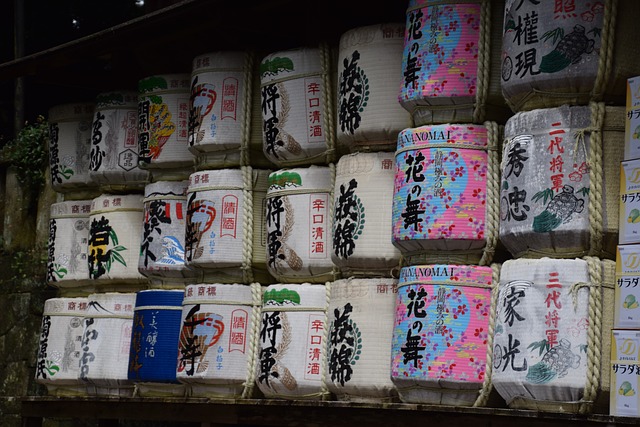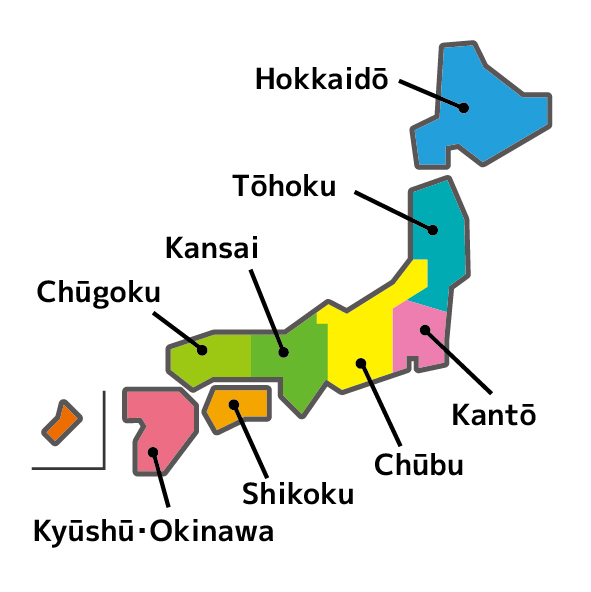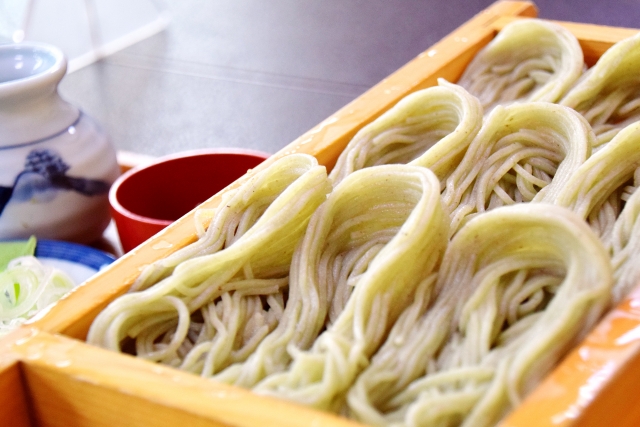
Introduction to Japanese Sake Regions
Welcome to the enchanting world of Japanese sake, where every region tells a unique story through its distinctive brews. This guide is designed to escort beginners on a journey across Japan, exploring the diverse sake regions and the exquisite flavors they offer.
Japan's sake production is deeply influenced by its geography, climate, and local ingredients, creating a rich mosaic of sake varieties across the country. Each region imbues its sake with a unique character, often reflective of the local "terroir" - a term borrowed from winemaking that refers to how a particular region's climate, soils, and aspect (terrain) affect the taste of wine. In sake brewing, terroir influences the flavor, aroma, and texture of sake, making the exploration of different regions an exciting venture for any sake enthusiast.
The Foundations of Sake Brewing Across Japan
Understanding Terroir in Sake
The concept of terroir is pivotal in understanding the diversity of sake. Factors such as the mineral content of local water sources, regional climate conditions, and specific rice strains contribute to the unique taste profiles of regional sake. For instance, sake from colder regions tends to be crisp and clean, while warmer regions often produce sake with richer, more robust flavors.
The Art of Sake Brewing
Sake brewing is an art form honed over centuries, with each region adopting practices that best suit their environmental conditions and available resources. While traditional techniques remain at the heart of sake production, many breweries also embrace technological advancements to enhance quality and consistency, illustrating a harmonious blend of old and new.
Touring Japan's Premier Sake Regions

Niigata: The Land of “Tanrei Junmai”
Niigata Prefecture, known for its heavy snowfall and pure water sources, produces sake that epitomizes the "tanrei" style - light, clean, and wonderfully crisp. This region's sake is celebrated for its smooth drinkability, often attributed to the use of soft water in brewing.
Kyoto: The Birthplace of Sake
As the historical heart of Japan, Kyoto boasts an illustrious sake-brewing heritage. The region's sake is characterized by its depth and complexity, with a graceful balance of flavors that reflect the refined elegance of Kyoto's culture.
Hiroshima: Innovators of Soft Water Sake Brewing
Hiroshima has pioneered the use of soft water in sake brewing, resulting in sake with a gentle, mellow taste. This innovation has propelled Hiroshima to the forefront of the sake industry, with many breweries producing award-winning sake that showcases the region's distinctive approach.
Yamagata: The Essence of Seasonal Sake
Yamagata Prefecture, renowned for its pristine nature and diverse climates, produces sake that mirrors the beauty of its landscapes. The region takes pride in its local rice varieties, such as Dewasansan and Haenuki, which contribute to the distinctive fresh and fruity notes of its sake. This, combined with the innovative spirit of its brewers, results in sake that is both deeply rooted in tradition and vibrant with contemporary flavors. Yamagata's sake stands out for its aromatic complexity and silky smoothness, making it a must-explore for sake enthusiasts seeking to understand the full spectrum of Japan's regional sake offerings.
Yamagata Sake Breweries
Hyogo: The King of Sake Rice
Hyogo Prefecture is synonymous with Yamada Nishiki rice, often referred to as the "king of sake rice." The region's sake benefits from this high-quality rice, offering a range of flavors from delicate and floral to rich and umami-packed.
Unique Sake Regions and Their Hidden Gems
Akita: The Realm of Rich and Robust Flavors
Akita's sake is known for its bold, full-bodied taste, mirroring the harsh winters and rugged landscape of the region. Local breweries often employ ancient fermentation techniques, crafting sake that is both hearty and deeply satisfying.
Fukushima: Award-Winning Sake Heritage
Fukushima has gained acclaim for its exceptional sake, winning numerous awards at national and international competitions. The region's success is attributed to its pristine water, quality rice, and the skillful craftsmanship of its brewers.
Sake Tasting: A Regional Journey

How to Taste Sake Like a Pro
Tasting sake involves engaging all the senses, from observing the sake's color and clarity to savoring its aroma and flavors. To fully appreciate the regional differences, it's recommended to taste sake from various regions side by side, noting the unique characteristics of each.
Pairing Food with Regional Sake
One of the joys of sake is its versatility in food pairing. Regional sake can enhance local cuisine, creating harmonious flavor combinations. For example, the light, dry sake from Niigata pairs wonderfully with the region's seafood, while the richer sake from Akita complements hearty dishes like stews.
A Comprehensive Guide to Japanese Sake Regions

Japan's sake production is as diverse as its landscape, with each prefecture bringing its own unique flavors and brewing traditions to the table. Here's a broad overview of Japan's sake-producing regions, showcasing the rich tapestry of this beloved beverage's heritage.
Hokkaido and Tohoku Region
- Hokkaido: Known for its cold climate, contributing to clean and crisp sake varieties.
- Aomori: Offers sake with robust flavors, thanks to its cool temperatures.
- Iwate: Produces sake that is balanced and smooth, often using local rice strains.
- Miyagi: Renowned for its aromatic and refined sake, benefiting from its coastal climate.
- Akita: Famous for its rich and robust sake, with a deep culture of sake appreciation.
- Yamagata: A rising star in the sake world, producing award-winning sake with unique flavor profiles.
- Fukushima: Home to numerous highly acclaimed breweries, known for their diverse and exquisite sake.
Kanto Region
- Ibaraki: Offers a variety of sake styles, with some breweries experimenting with new techniques.
- Tochigi: Produces sake that is often light and smooth, with a clean finish.
- Gunma: Known for its soft water sake, resulting in delicate and subtle flavors.
- Saitama: Boasts sake with a balance of sweetness and acidity, leveraging local rice varieties.
- Chiba: Coastal climate influences its sake production, leading to fresh and vibrant flavors.
- Tokyo: While not traditionally known for sake, Tokyo has some craft breweries creating innovative brews.
- Kanagawa: Offers sake with maritime influences, often light and refreshing.
Chubu Region
- Niigata: One of the most famous sake regions, known for its "tanrei junmai," light and dry sake.
- Toyama: Produces sake with rich umami flavors, thanks to its mountainous terrain and pure water sources.
- Ishikawa: Known for its full-bodied and umami-rich sake, reflecting its rich culinary culture.
- Fukui: Offers clean and crisp sake, with a focus on traditional brewing methods.
- Yamanashi: Despite being more famous for wine, it produces unique sake varieties that reflect its terroir.
- Nagano: Known for its diverse sake offerings, from light and aromatic to rich and complex.
- Gifu: Sake here is often characterized by its clarity and refined taste, using local mountain water.
- Shizuoka: Produces aromatic sake with a soft and smooth texture, benefiting from its natural environment.
- Aichi: Home to a rich history of sake production, offering both traditional and modern sake styles.
Kansai Region
- Mie: Known for its rich and aromatic sake, often using locally grown rice.
- Shiga: Produces sake that is smooth and well-balanced, with a focus on natural brewing processes.
- Kyoto: The heart of traditional sake brewing, known for its refined and elegant sake, especially Fushimi.
- Osaka: Offers unique sake varieties, with some breweries focusing on sake that pairs well with food.
- Hyogo: The leading producer of Yamada Nishiki rice, the "king of sake rice," resulting in premium sake.
- Nara: As the birthplace of sake, it continues to produce sake with deep historical roots and rich flavors.
- Wakayama: Known for its fruity and aromatic sake, often using local fruit in brewing.
Chugoku and Shikoku Region
- Tottori: Offers sake with a soft and gentle profile, using pure mountain water.
- Shimane: Known for its ancient sake brewing traditions, producing sake with depth and complexity.
- Okayama: Famous for using Omachi rice, resulting in rich and umami-forward sake.
- Hiroshima: A pioneer in soft water sake brewing, resulting in smooth and elegant sake.
- Yamaguchi: Produces a variety of sake styles, from dry to sweet, reflecting its coastal influences.
- Tokushima: Known for its aromatic and refined sake, often utilizing local rice strains.
- Kagawa: Offers sake with a clean and crisp profile, perfect for pairing with the region's famous udon.
- Ehime: Produces sake with a rich and rounded flavor, often enjoyed with the local cuisine.
- Kochi: Known for its bold and robust sake, reflecting the adventurous spirit of the region.
Kyushu and Okinawa Region
- Fukuoka: Offers sake with a balance of sweetness and acidity, perfect for the local Hakata cuisine.
- Saga: Known for its soft and smooth sake, often using local rice and water sources.
- Nagasaki: Produces sake with unique influences from its historical trade connections.
- Kumamoto: Famous for using Koji rice, resulting in aromatic and flavorful sake.
- Oita: Offers sake that is rich and full-bodied, often enjoyed with the region's hot springs.
- Miyazaki: Known for its robust and hearty sake, perfect for pairing with local meats.
- Kagoshima: Specializes in shochu but also produces unique sake varieties using local rice.
- Okinawa: Not traditionally known for sake, but some breweries are exploring awamori-infused sake.
Dine Like a Local: A Journey Through Japan's Regional Foods and Sake

Hokkaido and Tohoku Region
- Hokkaido: Grilled Hokkaido Seafood - Pairs well with crisp, clean sake varieties.
- Aomori: Neba Neba Natto Bowl - A sticky mix of natto, okra, and yam, complemented by robust sake.
- Iwate: Jajamen - A local noodle dish best enjoyed with smooth and balanced sake.
- Miyagi: Gyutan (Grilled Beef Tongue) - Rich flavors that match well with aromatic and refined sake.
- Akita: Kiritanpo Nabe - A hearty hot pot that pairs beautifully with Akita's bold sake.
- Yamagata: Imoni (Taro and Meat Soup) - A savory soup that goes well with award-winning Yamagata sake.
- Fukushima: Miso Dengaku - Grilled and miso-glazed tofu or vegetables, complemented by diverse sake.
Kanto Region
- Ibaraki: Natto - Fermented soybeans that pair with a variety of sake styles.
- Tochigi: Gyoza - Japanese dumplings that are a match for light and smooth sake.
- Gunma: Tonjiru - Pork and vegetable miso soup, ideal with Gunma's soft water sake.
- Saitama: Unagi (Grilled Eel) - Sweet soy-glazed eel pairs well with balanced sake.
- Chiba: Namero - Minced fish sashimi, complemented by fresh and vibrant sake.
- Tokyo: Monjayaki - A thinner, crispier version of okonomiyaki, enjoyable with innovative sake brews.
- Kanagawa: Sanma Sashimi - Fresh Pacific saury, best enjoyed with light and refreshing sake.
Chubu Region
- Niigata: Seafood Nabe - A seafood hot pot that pairs beautifully with Niigata's light, dry sake.
- Toyama: Masuzushi - Trout sushi on vinegared rice, complemented by Toyama's umami-rich sake.
- Ishikawa: Jibuni - Duck stew, ideal with full-bodied and umami-rich sake.
- Fukui: Echizen Crab - A winter delicacy that pairs well with clean and crisp sake.
- Yamanashi: Houtou - A hearty noodle dish, enjoyable with unique sake varieties.
- Nagano: Shinshu Soba - Buckwheat noodles, matched well with diverse Nagano sake.
- Gifu: Keichan - Chicken marinated in miso and grilled, complemented by refined sake.
- Shizuoka: Sakura Shrimp - Tiny, pink shrimp, best enjoyed with Shizuoka's aromatic sake.
- Aichi: Hitsumabushi - Grilled eel on rice, enjoyable with both traditional and modern sake styles.
Kansai Region
- Mie: Matsusaka Beef - Luxurious beef that pairs well with rich and aromatic sake.
- Shiga: Funazushi - Fermented sushi, a match for smooth and well-balanced sake.
- Kyoto: Yudofu - Boiled tofu, complemented by Kyoto's refined and elegant sake.
- Osaka: Takoyaki - Octopus balls, enjoyable with unique sake varieties.
- Hyogo: Kobe Beef - World-renowned beef, paired beautifully with premium sake.
- Nara: Kakinoha Sushi - Sushi wrapped in persimmon leaves, matched well with Nara's historic sake.
- Wakayama: Umeshu - Plum wine, a different but complementary beverage to Wakayama's fruity sake.
Chugoku and Shikoku Region
- Tottori: Tottori Beef - Rich flavors that pair well with soft and gentle sake.
- Shimane: Izumo Soba - Ancient-style buckwheat noodles, complemented by deep and complex sake.
- Okayama: Demi Katsudon - A demi-glace sauce over pork cutlet and rice, enjoyable with Okayama's Omachi rice sake.
- Hiroshima: Okonomiyaki - Savory Japanese pancake, paired beautifully with Hiroshima's elegant sake.
- Yamaguchi: Fugu Sashimi - Pufferfish sashimi, complemented by diverse sake styles.
- Tokushima: Naruto Tai - Sea bream, best enjoyed with aromatic and refined sake.
- Kagawa: Sanuki Udon - Thick wheat noodles, matched well with light and crisp sake.
- Ehime: Jakoten - Fried fish cake, enjoyable with rich and rounded sake.
- Kochi: Katsuo no Tataki - Lightly seared bonito, complemented by bold and robust sake.
Kyushu and Okinawa Region
- Fukuoka: Hakata Ramen - Rich pork broth ramen, pairs well with balanced sake.
- Saga: Saga Beef - Tender beef that goes beautifully with soft and smooth sake.
- Nagasaki: Champon - Noodle dish with seafood and vegetables, matched well with unique sake.
- Kumamoto: Basashi - Horse meat sashimi, enjoyable with aromatic and flavorful sake.
- Oita: Toriten - Chicken tempura, complemented by full-bodied sake.
- Miyazaki: Chicken Nanban - Fried chicken with tartar sauce, paired with robust and hearty sake.
- Kagoshima: Satsuma-age - Fried fish cakes, enjoyable with unique sake varieties.
- Okinawa: Goya Champuru - Bitter melon stir-fry, a different flavor profile but can be explored with awamori-infused sake.
The Future of Japan's Sake Regions
Innovations and Trends in Regional Sake Production
The Japanese sake industry is experiencing a renaissance, with regions experimenting with new brewing methods and rice varieties. This spirit of innovation, coupled with a deep respect for tradition, promises a bright future for Japan's sake regions.
Conclusion: The Endless Discovery of Japan's Sake Regions
The journey through Japan's sake regions is one of endless discovery, with each prefecture offering a unique glimpse into the country's rich sake culture. For beginners and seasoned drinkers alike, exploring the diverse landscapes of Japanese sake is an adventure that rewards curiosity with the exquisite pleasure of finding your favorite regional brew.
